Ever been intimidated by the idea of climbing in the Everest region? You're not alone. Most people think you need years of training and superhuman lungs to trek anywhere near the world's highest peak.
But here's the truth: the Everest region offers several stunning climbs that won't require an oxygen tank or your life savings. Perfect for beginners with basic fitness and a sense of adventure.
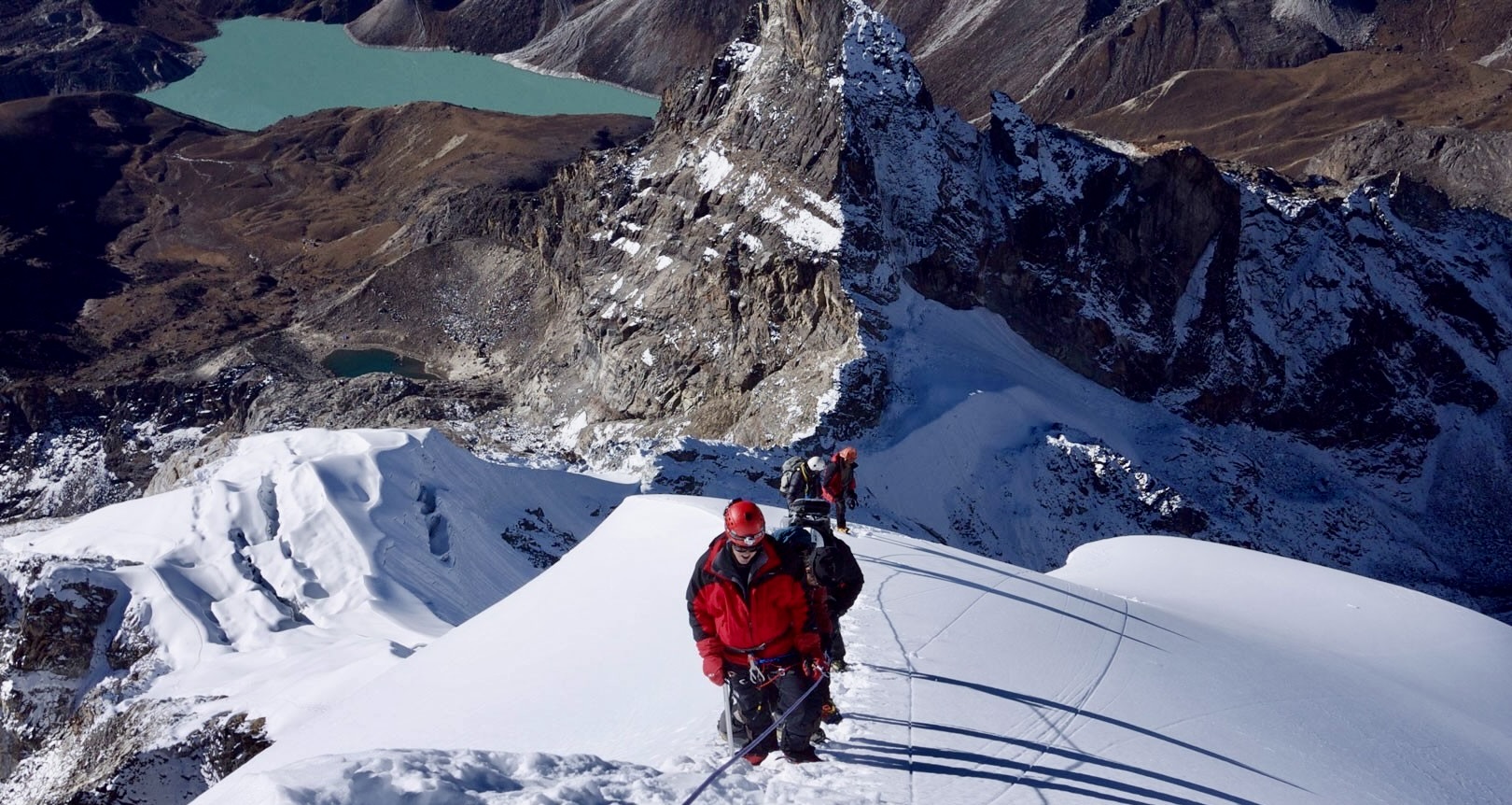
We've guided thousands of first-timers through the Everest region, and these five peaks consistently deliver that magical combination of accessibility and jaw-dropping views. Each offers that coveted Himalayan experience without the technical nightmares of their taller siblings.
So, which peak should you tackle first if you've never climbed above 5,000 meters? The answer might surprise experienced mountaineers, but not the Sherpas who've called these mountains home for generations.
Understanding Beginner-Friendly Peaks in the Everest Region
What are trekking peaks, and why are they ideal for beginners
The Everest region offers a perfect stepping stone for aspiring mountaineers through what we call "trekking peaks." These are snow-capped mountains that provide a challenging yet accessible introduction to Himalayan climbing. Unlike the imposing 8000-meter giants that require elite alpine climbing skills, trekking peaks typically range from 5,500m to 6,500m in height and require less technical expertise.
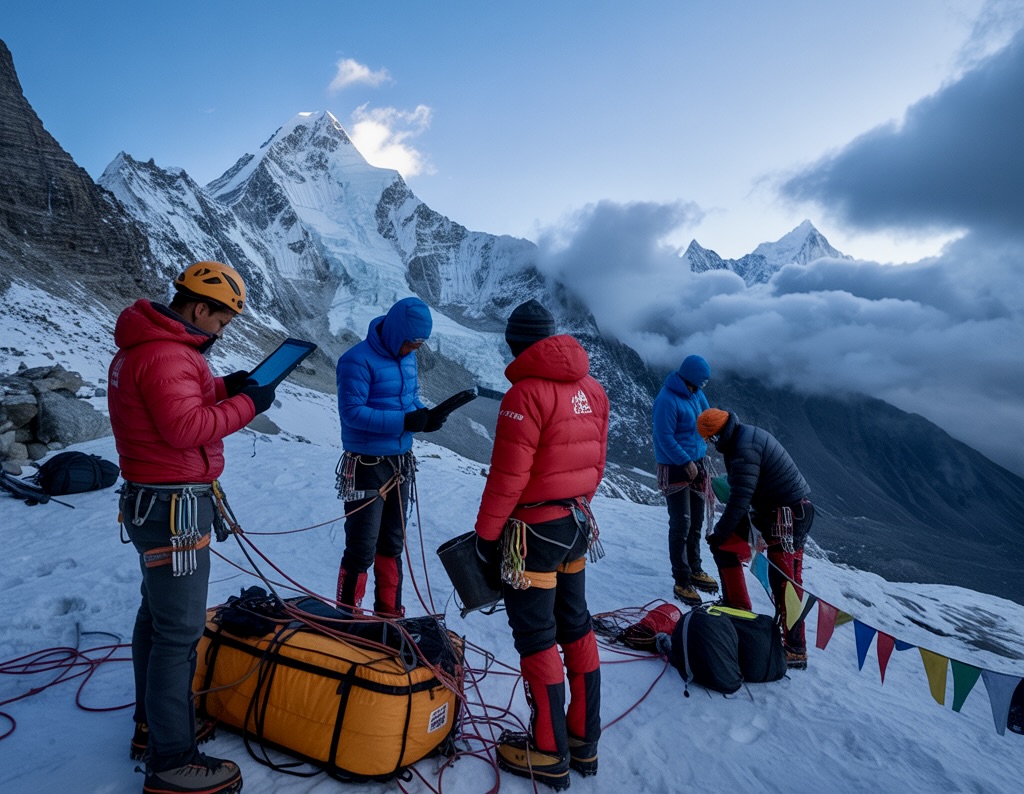
We've found that these peaks are ideal for beginners because they offer:
- A gradual progression from trekking to technical climbing
- Opportunities to learn fundamental mountaineering skills
- Spectacular views of major Himalayan mountains, including Everest, Lhotse, and Makalu
- A sense of achievement without the extreme risks associated with higher summits
For seasoned trekkers looking to challenge themselves beyond standard hiking journeys, peaks like Island Peak (6,189m), Mera Peak (6,476m), and Lobuche East (6,119m) provide the perfect transition into the world of mountaineering.
The importance of acclimatization before peak climbing
We cannot overemphasize the importance of proper acclimatization for successful and safe peak climbing in the Everest region. At these high altitudes, the human body needs time to adjust to decreasing oxygen levels.
Our recommended acclimatization practices include:
- Following established trekking routes before attempting summit climbs
- Incorporating rest days at strategic elevations
- Climbing to higher altitudes during the day and descending to sleep at lower elevations
- Avoiding rapid ascents that risk altitude sickness
For example, when climbing Island Peak, we recommend trekking to Chukhung Ri (5,546m) as an acclimatization exercise before attempting the summit. Similarly, for Lobuche East, completing the Everest Base Camp trek first serves as excellent preparation for the body.
Using helicopters to reach base camps directly is strongly discouraged as it prevents proper acclimatization and significantly increases health risks.
Physical and mental preparation requirements
We believe that climbing any mountain in the Everest region, regardless of its classification as "beginner-friendly," demands comprehensive preparation on both physical and mental fronts.
Physical requirements include:
- Strong cardiovascular endurance developed through regular aerobic training
- Upper and lower body strength for navigating varied terrain
- Experience with basic climbing techniques and equipment
- Familiarity with trekking at moderate altitudes
Mental preparation is equally important and involves:
- Understanding the inherent risks of high-altitude mountaineering
- Developing resilience to cope with challenging weather conditions
- Building patience for long climbing days (most summit attempts begin around 2-3 AM)
- Preparing for the psychological challenges of isolation in remote areas
For beginners, we recommend starting with less technical peaks like Mera Peak, which offers high altitude experience with relatively straightforward climbing sections. As confidence and skills develop, more technical challenges like Lobuche East can follow.
By properly understanding what makes these peaks accessible to beginners, ensuring thorough acclimatization, and preparing both physically and mentally, we can help ensure that your first Himalayan climbing experience is both safe and rewarding.
Island Peak (6,165m) - The Perfect Introduction to Himalayan Climbing
Location and Key Features
Island Peak, also known locally as Imja Tse, is nestled in the stunning Khumbu region of eastern Nepal. We find it conveniently located near the famous Everest Base Camp trail, making it an excellent addition to trekkers exploring this iconic area. The peak earned its distinctive name in 1953 from a British climbing team who observed that it resembles an island rising from a sea of ice - a truly poetic description that perfectly captures its appearance.
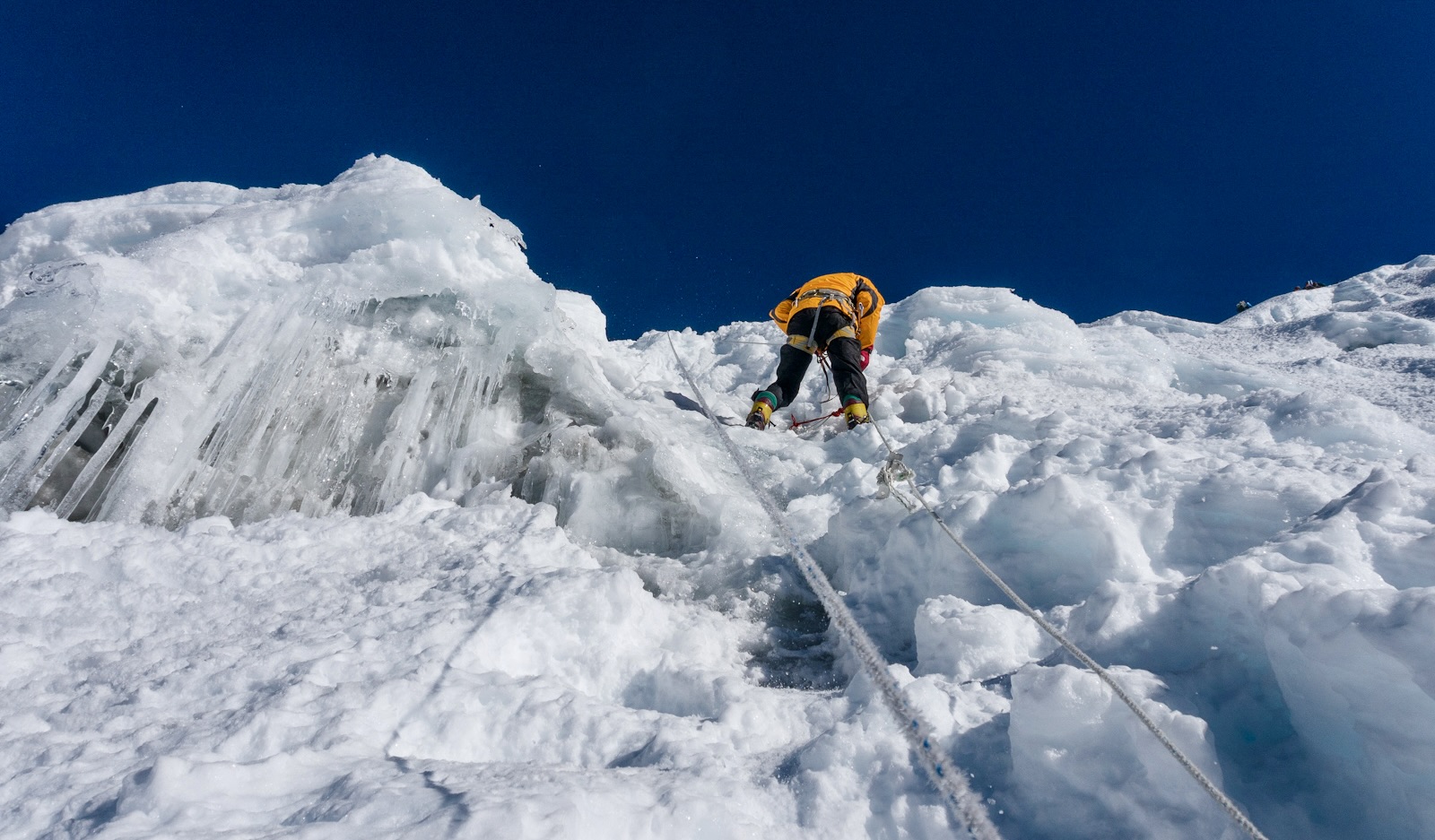
From our base at Island Peak, we can enjoy breathtaking views of Himalayan giants, including Everest and Lhotse. The journey to Island Peak takes us through charming Sherpa villages and offers us opportunities to summit Kala Patthar (5,545m), providing magnificent panoramic views of the surrounding mountains. At 6,189 meters (20,305 feet), Island Peak stands taller than any mountain in Europe or North America!
Technical Difficulty Level and Required Skills
We consider Island Peak the perfect "gateway mountain" for those transitioning from trekking to mountaineering. While it's not extremely technical, the climb isn't simply a walk in the park either. The approach primarily involves trekking, but the final summit push requires basic mountaineering skills and equipment.
For the summit attempt, we'll need to use:
- Crampons and mountaineering boots
- Ice axes
- Climbing harnesses
- Carabiners and ascenders
- Fixed ropes for steeper sections
As expedition leaders, we assure you that even with little or no alpine experience, reasonably fit climbers can successfully summit Island Peak. We provide comprehensive training before the main ascent, covering all necessary techniques to navigate the glacier crossings and the steep headwall that leads to the summit ridge.
Best Seasons and Climbing Conditions
We recommend two prime seasons for climbing Island Peak:
- Spring (March to May): Offers stable weather conditions with clear skies and moderate temperatures.
- Autumn (September to November): Provides the most reliable climbing conditions with minimal precipitation.
Both seasons feature the clearest weather, stable snow conditions, and significantly better chances of reaching the summit. We strongly advise avoiding the summer monsoon season when visibility is poor and trails become treacherous.
During the climb, temperatures can drop significantly, sometimes below -20°C (-4°F) at night near the summit. Summit day typically begins around 1 AM with headlamps illuminating our path across the glacier. The entire climbing expedition from Kathmandu to the summit and return typically takes 16-20 days, which includes necessary acclimatization days to adjust safely to the altitude.
With our experienced guides and proper preparation, we've helped countless beginners successfully reach this magnificent 6,000-meter summit – truly the perfect introduction to Himalayan climbing.
Lobuche Peak (6,119m) - Technical Training for Aspiring Mountaineers
At Everest Sherpa Expeditions, we've guided countless climbers up Lobuche Peak over the years. This magnificent 6,119m mountain offers the perfect blend of technical challenge and accessibility for those looking to develop their mountaineering skills before attempting higher Himalayan peaks.
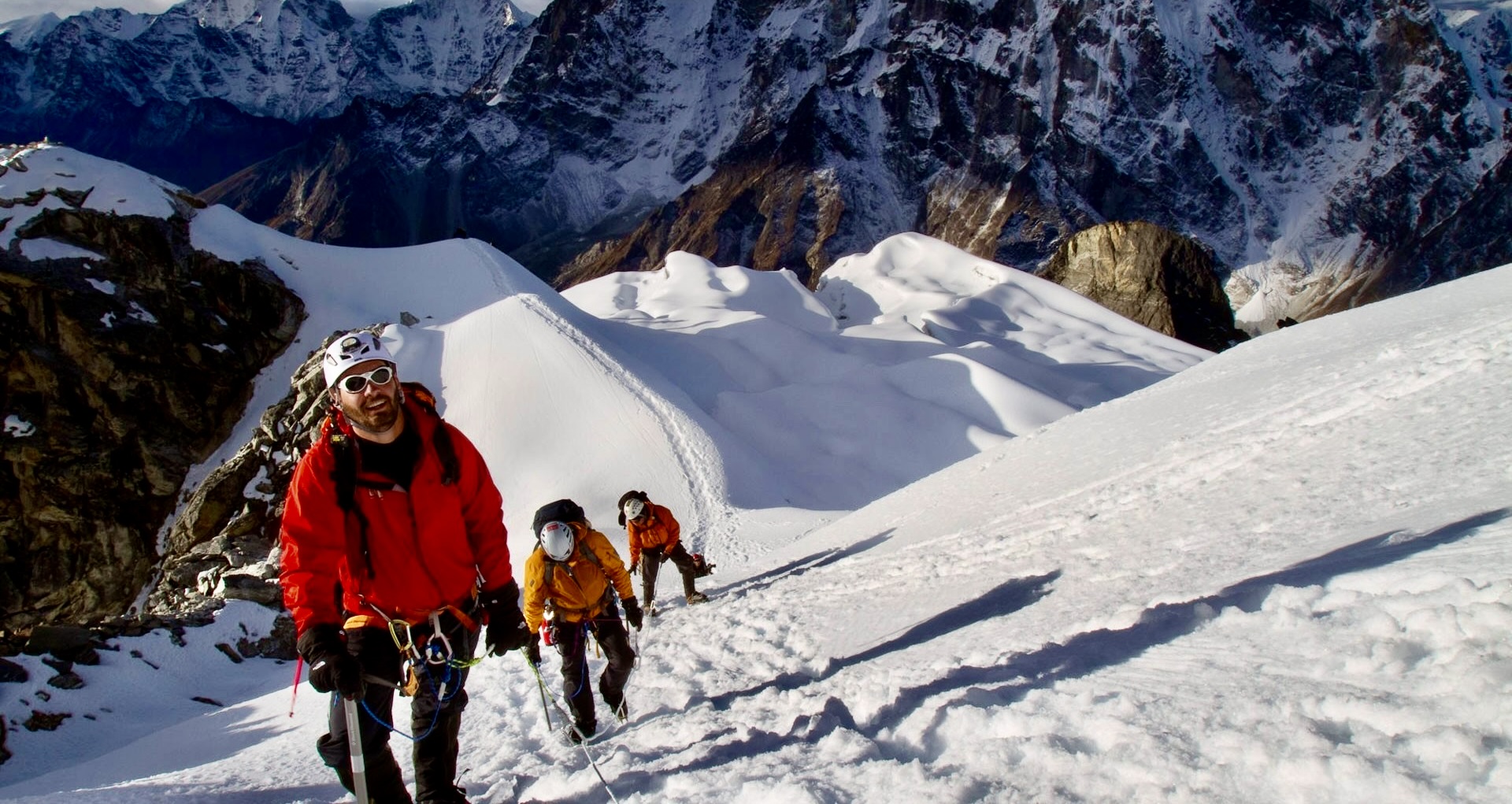
A. East vs West Summit Options
When planning your Lobuche expedition, you'll need to choose between two distinct summit options:
- Lobuche East (6,119m/20,075ft): Classified as a trekking peak by the Nepal Mountaineering Association, though we emphasize this is a technical climb, not a simple trek. This is our recommended route for most aspiring mountaineers.
- Lobuche West (6,145m/20,161ft): Standing slightly higher at 6,145m, this summit presents significantly more technical challenges and is better suited for experienced climbers.
Throughout our 17+ years of leading expeditions here, we've witnessed how both routes evolve dramatically between seasons as glacier conditions change. What remains constant is the need for proper preparation regardless of which summit you target.
B. Technical Challenges and False Summits
Lobuche Peak is not to be underestimated. Here's what we've encountered leading expeditions:
- The Headwall: This is where technical climbing truly begins. Depending on the season, you'll face varying conditions:
- Deep snow requires significant endurance
- Exposed rock and ice requiring precise crampon work
- Steep sections (up to 60 degrees) requiring jumar and fixed rope techniques
- Summit Day Demands: We've experienced summit days ranging from 12-16 hours round trip from High Camp. This requires exceptional physical conditioning and technical competence.
- Descending Challenges: Often overlooked, the descent requires specific technical skills, including:
- Proper use of figure-8 descenders
- Confident abseiling/rappelling techniques
- Managing rope transitions at anchor points
- Maintaining safety systems throughout
The conditions on Lobuche constantly change, and our guides must adapt the route each season. What was straightforward years ago has become more challenging as climate change affects the mountain's ice conditions.
C. Why It's Considered Ideal Preparation for Everest
We consider Lobuche Peak perfect preparation for higher Himalayan climbs, including Everest, for several key reasons:
- Technical Skills Development: The climb requires proficiency with:
- Fixed rope techniques (both ascending and descending)
- Crampon and ice axe use on varied terrain
- Exposure to ladder crossings with crampons
- Rope management at altitude
- Physical Preparation: The demanding nature of Lobuche tests your:
- Endurance at high altitude (above 6,000m)
- Ability to maintain performance during long summit days
- Leg strength for steep ascents and descents
- Core stability for technical sections
- Mental Conditioning: Perhaps most importantly, Lobuche challenges you mentally:
- Decision-making at altitude
- Managing risk on technical terrain
- Developing confidence with exposure
- Building resilience during challenging conditions
Through our years of guiding both Lobuche and Everest expeditions, we've seen how climbers who successfully summit Lobuche are significantly better prepared for the challenges of higher peaks. The technical skills, physical conditioning, and mental fortitude developed on Lobuche create the foundation needed for successful Himalayan mountaineering.
Mera Peak (6,476m) - Highest Yet Most Accessible Trekking Peak
Unique location in the Khare section
Mera Peak is uniquely situated in Nepal's Mahalangur section within the UNESCO World Heritage Site of Sagarmatha National Park. This magnificent peak overlooks the beautiful Hinku Valley, with its highest point at the North Summit (6,476m). While most climbers target the Central Summit (6,461m), the journey to reach this point requires several days of trekking through highly elevated areas.
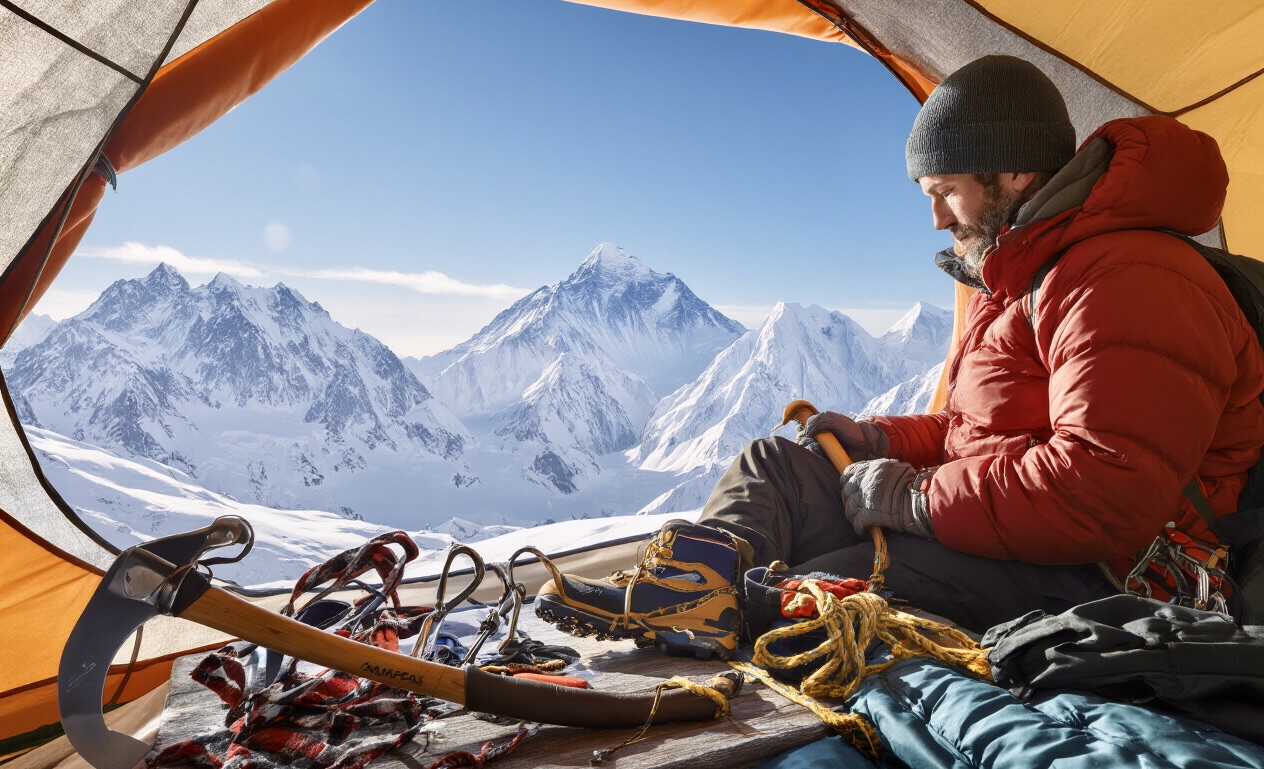
What makes Mera Peak's location special is its accessibility despite being the highest permitted trekking peak in Nepal. From Khare (5,045m), which serves as the main base for climbers, the route progresses through Mera La (5,415m) before reaching the High Camp (5,800m). We strongly recommend spending a night at Mera La rather than heading straight to High Camp, as this intermediate stop significantly increases acclimatization and summit success rates.
Climbing difficulty compared to other peaks
Despite being higher than peaks like Island Peak (6,189m) and Lobuche Peak (6,119m), Mera Peak is considered more accessible for several reasons:
- Alpine Grade PD: Mera is graded as Alpine PD (slightly difficult), requiring basic mountaineering skills rather than advanced technical climbing
- Non-technical nature: The climb involves mostly walking on glaciers at fair degrees of steepness
- Straightforward approach: Unlike other trekking peaks, the majority of the climb is straightforward glacier travel using crampons and ice axes
- Success rate potential: With proper acclimatization and training, summit success rates can approach 95%
The final section involves an ascent of a snow dome at a 50-degree angle, requiring the use of an ascender/jumar on a fixed rope; however, this is manageable for beginners with proper guidance. The main challenge isn't technical climbing, but rather the altitude itself—at 6,461m, oxygen levels drop to around 47% of those at sea level.
We find that the longer approach route through less-trodden villages like Pangoma, Chungbu Kharka, and Chalem Kharka significantly improves acclimatization and increases summit success rates, though it adds 2-3 days to the itinerary.
Future potential as a skiing destination
Mera Peak has emerging potential as a skiing destination due to its relatively straightforward slopes and consistent snow conditions. The Mera Glacier provides excellent terrain for alpine skiing, with slopes rarely exceeding 30-40 degrees except for the final pitch.
The best seasons for potential skiing activities would align with the optimal climbing seasons of spring (April-May) and autumn (October-November) when weather conditions are most favorable. However, temperatures can drop as low as -20 degrees Celsius during summit days.
As climate change continues to affect Himalayan glaciers, including Mera Glacier, which has become more complex in recent years, any future skiing development would need careful monitoring of changing conditions. The peak's accessibility, combined with its stunning panoramic views of five 8,000m mountains, makes it an attractive prospect for adventure skiing enthusiasts looking for unique high-altitude experiences.
Combining the Everest Base Camp Trek with Peak Climbing
The acclimatization benefits of reaching EBC first
We've designed our expedition packages to maximize your chances of summit success through proper acclimatization. By trekking to Everest Base Camp before attempting peak climbs like Island Peak, we ensure your body gradually adapts to the high altitude. Our 19-day itinerary includes strategic acclimatization days at Namche Bazaar (3,440m) and Dingboche (4,460m), where we follow the mountaineer's principle of "climb high, sleep low."
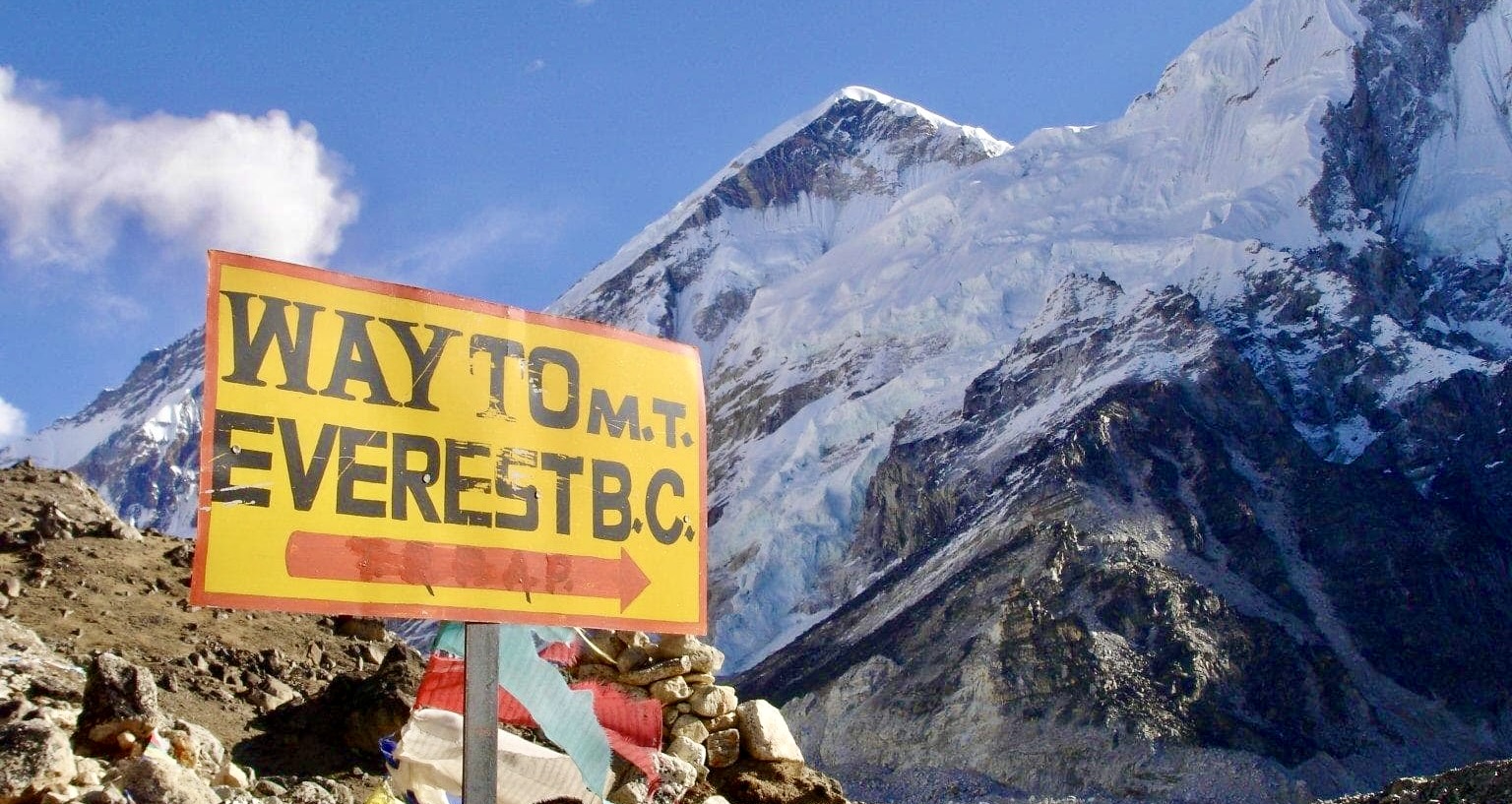
The gradual ascent to EBC at 5,364m and Kala Patthar at 5,550m prepares your body for the higher challenges of Island Peak at 6,189m. This methodical approach significantly reduces the risk of altitude sickness and increases your summit chances, as your body will have already adapted to functioning with lower oxygen levels.
Cost-effectiveness of combining both experiences
Combining your Everest Base Camp trek with peak climbing represents exceptional value. Our combined packages typically range from $1,800 to $2,000 per person, offering substantial savings compared to booking these adventures separately. This inclusive price covers transportation, accommodation, meals, permits, guide and porter fees.
By unifying these experiences, you'll save on:
- Duplicate transportation costs (including the expensive Kathmandu-Lukla flights)
- Permit fees
- Guide and porter expenses
- Logistical arrangements
This approach not only saves money but also maximizes your time in the Everest region, allowing you to experience both the cultural aspects of the trek and the technical challenges of peak climbing in a single, cohesive journey.
Creating the ultimate Everest region adventure package
We've perfected the ultimate Everest adventure by thoughtfully integrating EBC trekking with peak climbing. Our 19-day itinerary offers the perfect balance of challenge, achievement, and cultural immersion:
- Cultural immersion: Visit the historic Tengboche Monastery and experience authentic Sherpa villages
- Iconic landmarks: Stand at Everest Base Camp and enjoy panoramic views from Kala Patthar
- Technical challenges: Cross the high-altitude Kongma La Pass (5,535m)
- Mountaineering training: Receive comprehensive pre-climb training at Island Peak Base Camp
- Summit achievement: Experience the thrill of reaching Island Peak's summit at 6,189m
This carefully crafted package includes acclimatization days, pre-climbing training, and the perfect progression of challenges. You'll experience both the cultural richness of the Everest region and the exhilaration of standing atop your first Himalayan peak - truly the best of both worlds in a single, unforgettable journey.
With over 40 years of experience, we ensure your safety while making your mountain dreams come true in the most efficient and rewarding way possible.
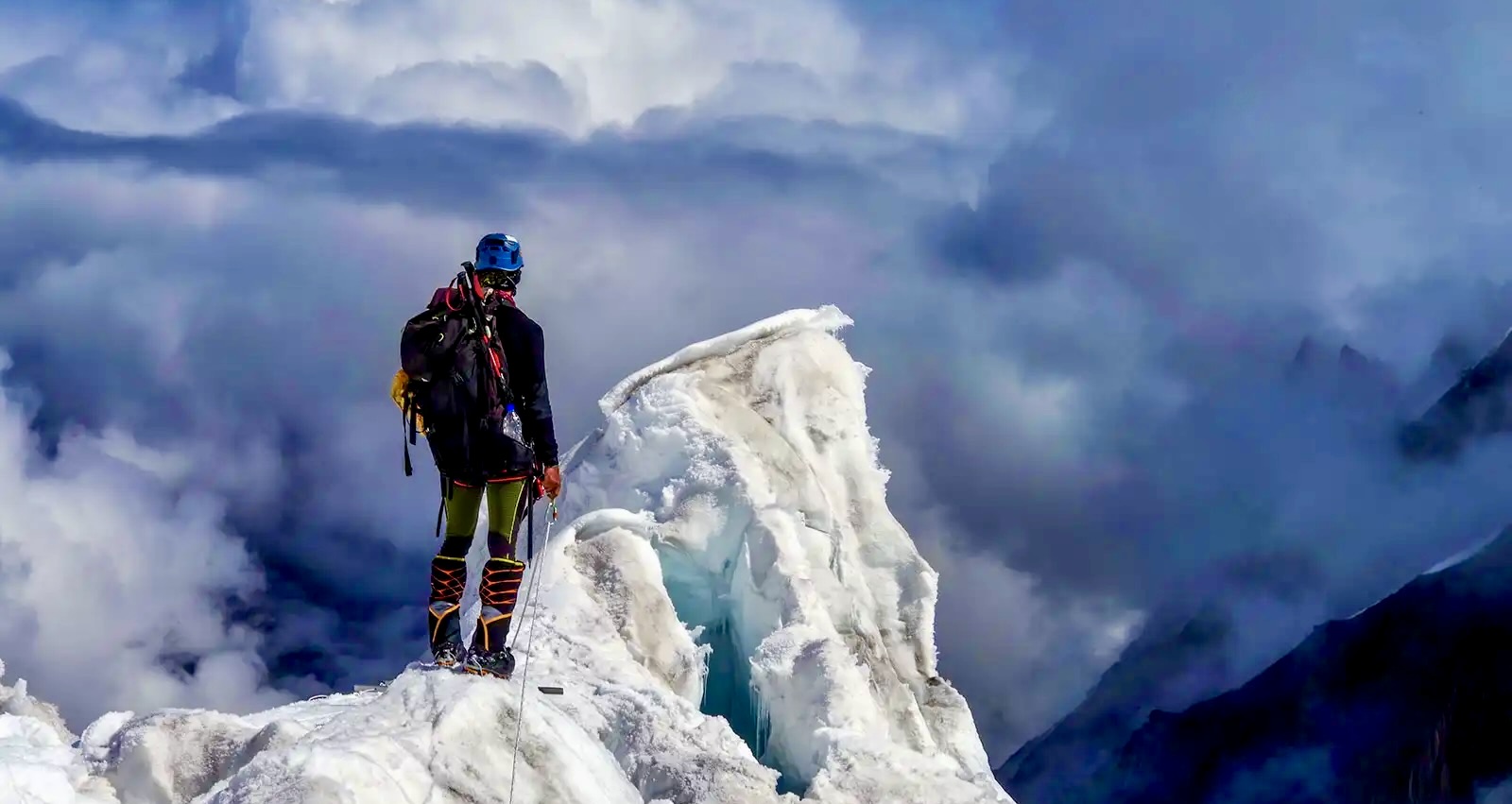
The Everest Region offers remarkable opportunities for those taking their first steps into Himalayan mountaineering. Island Peak stands as an ideal introduction with its manageable 6,165m summit that combines trekking with basic climbing skills. Lobuche Peak challenges beginners with slightly more technical sections while still remaining accessible, while Mera Peak provides the highest vantage point with breathtaking panoramic views despite being technically straightforward.
For the ultimate Himalayan adventure, combining an Everest Base Camp trek with a peak climbing expedition creates an unforgettable journey that balances cultural immersion with personal achievement. Whichever peak you choose, Everest Sherpa Expeditions provides comprehensive support, experienced guides, and proper acclimatization schedules to ensure your safety and success on these magnificent beginner-friendly mountains. Start your high-altitude climbing journey in the world's most iconic mountain range—your summit awaits!
If you need any further information, please contact us by email: [email protected], Phone: +977- 980 195 6248 (WhatsApp).


